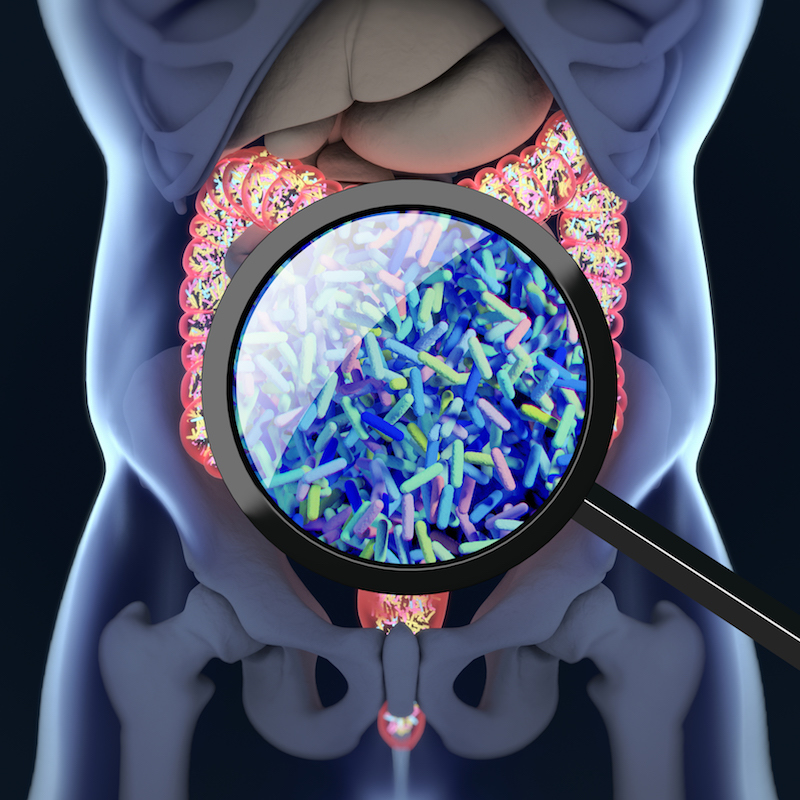Microbiome and Nutrition
The complex community of bacteria, yeasts and viruses living in our intestines, collectively known as the gut microbiome, is shaped, in part, by what we eat. Genetics, environment, and other factors also influence an individual’s microbial community. Research at the NRI investigates these complex relationships and their impact on disease risk. We use animal models and bioinformatics to study the associations between nutritional metabolites, gut microbiome, and health. What happens in the gut doesn’t stay in the gut. Your microbiome can play a role in cardiovascular disease, obesity and diabetes, and even cancer. Our team envisions a future where analysis of your microbiome can determine disease risk, and medical foods can be prescribed to treat and prevent disease by regulating the microbiome.
Publications
Microbiome and Nutrition Publications
2020
Population studies of TMAO and its precursors may help elucidate mechanisms. Meyer K
2019
Association of dietary patterns with the gut microbiota in older, community-dwelling men. Meyer K
2018
Meta-analysis of human genome-microbiome association studies: the MiBioGen consortium initiative. Meyer K
Human microbiota, blood group antigens, and disease. Sumner S
2017
Trimethylamine N-Oxide, the Microbiome, and Heart and Kidney Disease. Zeisel S
2016
Diet and Gut Microbial Function in Metabolic and Cardiovascular Disease Risk. Meyer K
Antibiotic-mediated gut microbiome perturbation accelerates development of type 1 diabetes in mice. Sumner S
Related News
December 2017
Choline: The essential but forgotten nutrient November 27, 2017 – Perhaps it’s because you don’t see it on nutrition labels yet, but choline — an essential nutrient from conception through old age — tends to be tragically overlooked. According to data from the...
Choline: The essential but forgotten nutrient
November 27, 2017 – Perhaps it’s because you don’t see it on nutrition labels yet, but choline — an essential nutrient from conception through old age — tends to be tragically overlooked. According to data from the National Health and Nutrition Examination Survey, only 1 in 10 of us get enough choline, and those percentages drop among women during pregnancy — right when they need it most.
Why Iron Man’s mother didn’t drink alcohol during pregnancy
November 27, 2017 -In the Marvel movie Iron Man, Tony Stark (Iron Man) is a genius inventor who creates a suit of armor, giving himself enhanced strength and the ability to fly. Although Tony Stark carries the name “Iron Man” for his suit of metal armor, his name is also an apt description of the abundance of iron that he has in his body, especially in his brain. The human body requires iron to function normally, and without enough iron, adults feel fatigued and have difficulty concentrating. Iron is even more essential during pregnancy. If Tony Stark’s mother had not consumed enough iron during pregnancy, it is unlikely that he would have become a brilliant inventor, because iron is necessary for the proper development of the infant’s brain.
Dr. Zeisel discusses nutrition at November Chamber of Commerce breakfast
November 20, 2017 – Recommending proper nutrition can be difficult because not all people are the same, according to Dr. Steven Zeisel of the Kannapolis-based North Carolina Research Campus. “And that’s why nutrition research has been so frustrating. You read in Newsweek one week that you should drink less coffee and, the next week, you should drink more,” Zeisel said. He said much of the “fuzziness” in nutrition research has come from scientists not knowing why one person responds to a certain nutrient while others do not. That’s why his institute at the Research Campus is trying to be the leading group of faculty asking — and answering — that question.
November 2017
What's Essential for the Prenatal Brain? October 25, 2017 – An interview with Steven H. Zeisel, MD, PhD, Kenan Distinguished University Professor of Nutrition and Pediatrics, and Director, UNC Nutrition Research Institute, Kannapolis, NC. SZ: “In science, 10 percent...
Nutrition Training for Young Doctors Lacks Bite
October 25, 2017 – Most US medical schools do not require medical students to learn basic nutrition theory, even though poor diet is the leading preventable risk factor for disability or early death in the United States. “It takes at least 25-30 hours of medical school instruction to achieve just basic nutrition competencies,”

